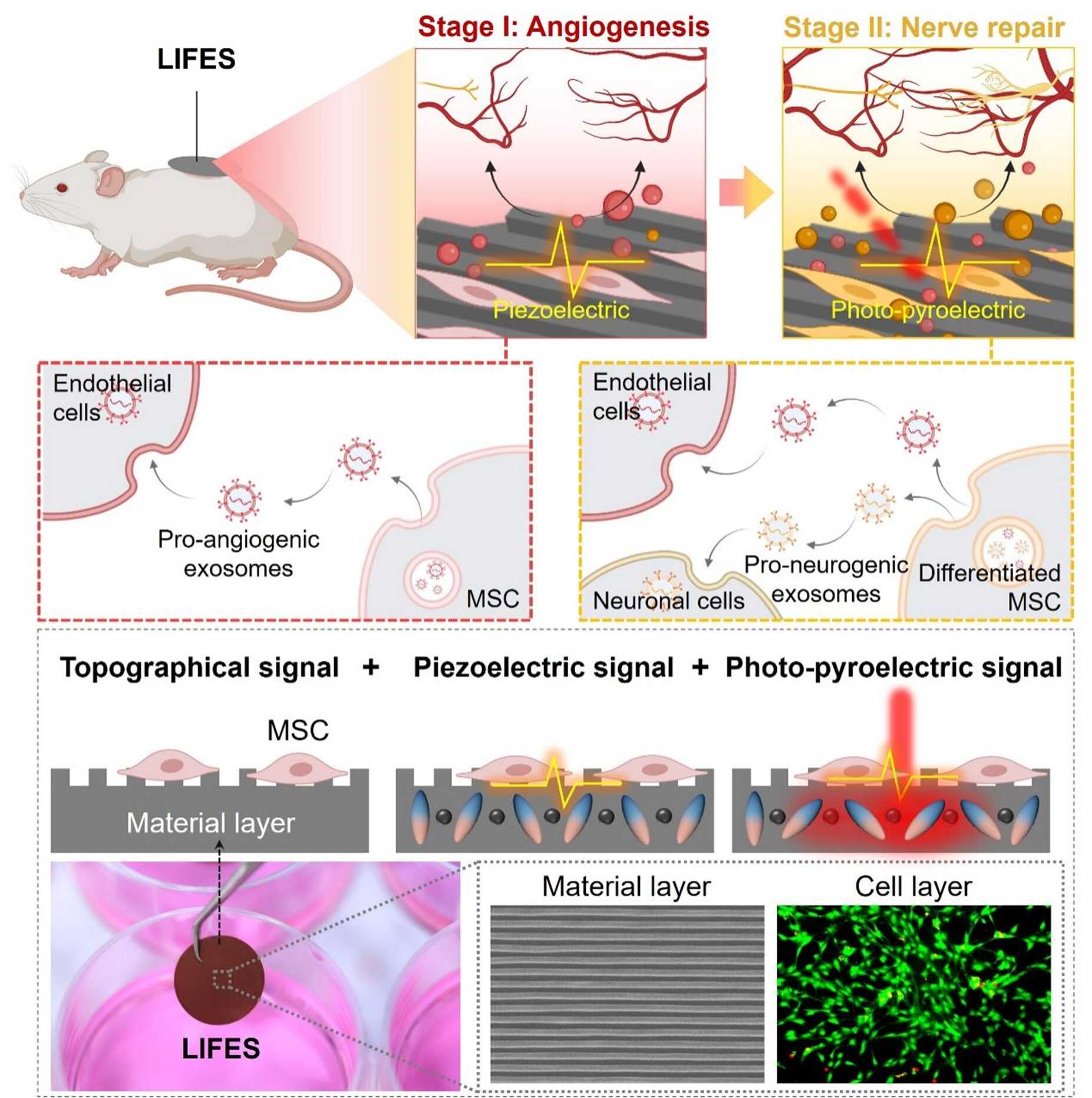
A research team led by Dr. DU Xuemin from the Shenzhen Institute of Advanced Technology (SIAT) of the Chinese Academy of Sciences has developed a new technology, living interface for fine-tuned exosome secretion (LIFES), that promotes neurovascular modeling. LIFES combines a ferroelectric layer with a living cell layer to secrete bioactive exosomes with tunable contents and miRNA cargoes. The associated study was published in Matter on Nov. 21.
Neurovascular remodeling is crucial for restoring normal functions of regenerated tissues or engineered organs, which require multitarget and phase-specific paracrine regulation. However, existing strategies cannot mimic the dynamic and complicated paracrine regulation effects of native physiological processes, thus hindering synergistic neurovascular remodeling.
Exosomes, as key entities in the native paracrine process, show great promise for neurovascular remodeling. Nevertheless, challenges remain in using exosomes. For example, direct exosome administration is limited by its short lifespan (24~48 hours). In addition, exosome delivery systems struggle with preserving bioactivity and maintaining adaptable miRNA cargoes throughout the entire release period, thus limiting their effectiveness at different stages of neurovascular remodeling.
LIFES’ ferroelectric component is a poly (vinylidene fluoride-co-trifluoro ethylene)-based intelligent material layer with rationally designed topographical structures and superior electric properties for cell modulation. Its living cell layer component comprises mesenchymal stem cells (MSCs) derived from rat bone marrow for the efficient biogenesis of exosomes.
Through the synergistic interaction of these two core components, LIFES can secrete bioactive exosomes in a sustained (~192 hours), phase-specific manner, with tunable contents (~8-fold increase as compared to cell alone) and programmable miRNA cargoes (initially pro-angiogenic and later pro-neurogenic).
"The phase-specific exosome secretion of LIFES meets physiological requirements, which aligns with the native multi-target and multi-stage paracrine regulation effects observed in physiological neurovascular remodeling processes," said Dr. DU.
By mimicking the natural paracrine regulation effects of native physiological processes during neurovascular remodeling, LIFES effectively promotes the reconstitution of neurovascular networks, even in challenging diabetic wound models.
This study will open new avenues for next-generation intelligent materials, revolutionizing biomedical devices, regenerative medicine, and brain-machine interfaces.

Design of the LIFES. LIFES imparts topographical, piezoelectric, and photo-pyroelectric signals for cell modulation, enabling fine-tuned exosome secretion, which facilitates neurovascular remodeling. (Image by SIAT)

86-10-68597521 (day)
86-10-68597289 (night)

52 Sanlihe Rd., Xicheng District,
Beijing, China (100864)

